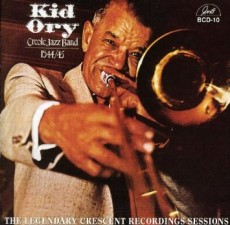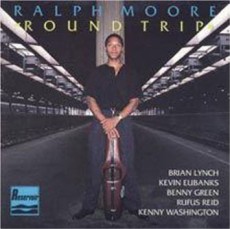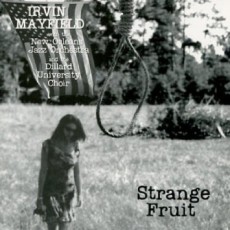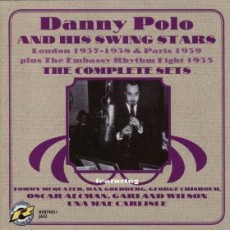
Daily Dose Of Jazz…
Una Mae Carlisle was born on December 26, 1915 in Zanesville, Ohio and was trained to play the piano by her mother. Performing in public by age three, still a child, she performed regularly on radio station WHIO AM in Dayton, Ohio.
In 1932, while a teenager, Fats Waller discovered Carlisle while she worked as a live local Cincinnati performer live and on radio. Her piano style was much influenced by Waller’s, playing in a boogie-woogie stride style that incorporated humor into her sets. Una Mae played solo from 1937, repeatedly touring Europe and recording with Waller in the late 1930s.
By the 1940s Carlisle recorded as a leader for Bluebird Records with Lester Young, Benny Carter and John Kirby. She had a longtime partnership with producer/publisher/manager Joe Davis, which began after her contract with Bluebird expired. Her records during this period enlisted the talents of Ray Nance, Budd Johnson and Shadow Wilson.
As a songwriter she also found success as Cab Calloway and Peggy Lee were just two among those who covered her tunes. She had her own radio and television programs in the late 1940s Una Mae recorded her last session for Columbia Records with Don Redman early in the 1950s.
With her suffering from chronic mastoiditis that required repeated surgeries and hospitalizations, the vocalist was forced her to retire in 1952. Pianist and songwriter Una Mae Carlisle passed away of pneumonia in a Harlem hospital on November 7, 1956.

Daily Dose Of Jazz…
Kid Ory was born Edward Ory on December 25, 1886 in Woodland Plantation near La Place, Louisiana. He started playing music with home-made instruments in his childhood but by his teens was leading a well-regarded band in Southeast Louisiana. A banjo player during his youth, it is said that his ability to play the banjo helped him develop “tailgate”, a particular style of playing that has the trombone playing a rhythmic line underneath the trumpets and cornets.
He kept La Place as his base of operations due to family obligations until his twenty-first birthday, when he moved his band to New Orleans. While Kid was living on Jackson Avenue, he was discovered by Buddy Bolden, playing his first new trombone, instead of the old civil war model but his sister said he was too young to play with Bolden. With one of the best-known bands in New Orleans in the 1910s, he hired many of the great jazz musicians of the city, including cornetists Joe “King” Oliver, Mutt Carey, and Louis Armstrong.
In 1919 he moved to Los Angeles and he recorded Ory’s Creole Trombone and Society Blues there in 1921 with a band that included Mutt Carey, Dink Johnson and Ed Garland. They were the first jazz recordings made on the west coast by a Black jazz band from New Orleans. His band recorded with the recording company Nordskog and paying them for the pressings sold them under his own label of Kid Ory’s Sunshine Orchestra at a store in Los Angeles called Spikes Brothers Music Store.
Moving to Chicago in 1925 he was very active working and recording with Louis Armstrong, Jelly Roll Morton, King Oliver, Johnny Dodds, Bessie Smith, Ma Rainey and many others. He mentored Benny Goodman and later Charles Mingus. The Great Depression retired Kid from music, not playing again till 1943. From 1944 to about 1961 he led one of the top New Orleans style bands of the period working with Alvin Alcorn, Teddy Buckner, Darnell Howard, Jimmie Noone, Albert Nicholas, Barney Bigard, George Probert. Buster Wilson, Cedric Haywood and Don Ewell.
The Ory band was an important force in reviving interest in New Orleans jazz, making popular 1940s radio broadcasts, among them a number of slots on The Orson Welles Almanac program. In 1944–45 the group made a series of recordings on the Crescent Records label, founded by Neshui Ertegun for the express purpose of recording Ory’s band.
Retiring from music in 1966 he spent his last years in Hawaii with the assistance of Trummy Young. Trombonist and bandleader Kid Ory, one of the most influential trombonists of early jazz, passed in Honolulu on January 23, 1973.

Daily Dose Of Jazz…
Ralph Moore was born on December 24, 1956 in London, England and grew up in a crowded inner city area. He showed no particular musical interest until his mother bought him a trumpet when he was 13. He studied with Brixton local musician Alan Briggs and was soon sitting in with pub bands. Briggs had a tenor saxophone that the young musician fell in love with the look of the instrument and soon made the switch.
1972 saw Ralph moving to California to live with his American father, graduating from Santa Maria High School where he played in the jazz orchestra and collected several music awards.Three years later he enrolled at Berklee Colege of Music, studied with saxophonist Andy McGhee and another three years later received the Lenny Johnson Memorial Award for outstanding musicianship from the college.
He launched his professional career with a tour of Scandinavia, later joined Frank Quintero for recording and a tour of South America. He moved to New York City in 1981 and within two months joined the Horace Silver Quintet for an association that lasted four years and included tours of Europe and Japan.
Moore has worked with Roy Haynes, Charles Mingus Dynasty, Freddie Hubbard, Dizzy Gilespie’s Reunion Big Band, Kevin Eubanks, Bill Mays, Valery Ponoomarev, Roy Hargrove, Jimmy Knepper, Brian Lynch, J.J. Johnson, Billy Hart, Oscar Peterson, Superblue, Cedar Walton and Ray Brown. He continues to perform, tour and record as a leader and sideman.
More Posts: saxophone

Daily Dose Of Jazz…
Irvin Mayfield, Jr. was born on born December 23, 1977 in New Orleans, Louisiana, the youngest of five brothers, three half-brothers and a half-sister. He received his first trumpet when he was in the fourth grade, asking his father for one after seeing the success a friend of his was having with girls by playing the instrument. Early in his public school education, he befriended fellow schoolmate Jason Marsalis. As a young man he attended and graduated from New Orleans Center for Creative Arts, declined a scholarship to Juilliard School of Music to attend the University of New Orleans, then dropped out during his first semester.
Mayfield began his musical career during the latter half of the 1980s, playing with the Algiers Brass Band, shared a New York City apartment with Wynton Marsalis for a brief period and helped found Los Hombres Calientes with Bill Summers, Jason Marsalis, Victor Atkins III, David Pulphus, and Yvette-Bostic Summers. Signing with Basin Street Records, the groups debut album garnerd much success and Irvin received national recognition.
As an educator Mayfield would go on to be an artist-in-residence and establish the Institute of Jazz Culture at Dillard University, found the sixteen-piece New Orleans Jazz Orchestra, accept a one-year appointment as Artistic Director of Jazz at Orchestra Hall, the five-concert jazz series of the Minnesota Orchestra, received The Chancellor’s Award from the University of New Orleans, and awarded an Honorary Doctorate from Dillard University,
Over the course of his still vibrant career, Mayfield has been a part of the Higher GroundHurricane Relief Benefit Concert in the aftermath of Katrina, and was nominated to the National Council on the Arts by President George W. Bush and was subsequently appointed to the post by President Obama in 2010, serving through 2014. He has performed at the White House and festivals around the country, was made a Cultural Ambassador of the City of New Orleans, has a club named after him in the Royal Sonesta Hotel and has recorded to date, twenty-five albums.
Grammy and Billboard Award-winning trumpeter Irvin Mayfield currently serves as Jazz Artist in Residence for the Apollo Theater, is Artistic Director of the New Orleans Jazz Orchestra and continues to perform, record and tour with his small groups and occasionally with Los Hombres Calientes.
More Posts: trumpet

Daily Dose Of Jazz…
Danny Polo was born on December 22, 1901 in Toluca, Illinois. His father was also a clarinetist and he learned to play from a young age, working in marching bands from age eight. During his youth Polo played with Claude Thornhill as a duo.
In the 1920s, Polo played with Elmer Schoebel, Merritt Brunies, Arnold Johnson,, Ben Bernie, Jean Goldkette and Paul Ash. 1927 saw him in Europe with Dave Tough, playing with several Continental bandleaders including Ben Firman, Lud Gluskin, George Carhart, Ben Berlin and Arthur Briggs. From 1930-1935 he played with Ambrose & His Orchestra, then returned to the U.S. in December of that year.
In 1938, Danny returned to Britain to play with Ambrose again, and worked with Ray Ventura in Paris in 1939. Late that year he moved back to the States for good and spent the early Forties working with Joe Sullivan, Jack Teagarden, worked on the Bing Crosby film Birth of the Blues and with Claude Thornhill again.
The clarinetist led his own Midwestern territory band, Danny Polo and His Jive Five, for a time, then returned to play with Thornhill once more in 1947. He recorded two sessions as a leader with His Swing Stars, which include Alix Combelle, both in Europe, in 1938-39. He also played in several experimental sessions with Miles Davis around 1947-48. While performing with Thornhill, Danny Polo became ill, and passed away rather suddenly on July 11, 1949 in Chicago, Illinois.
More Posts: clarinet


